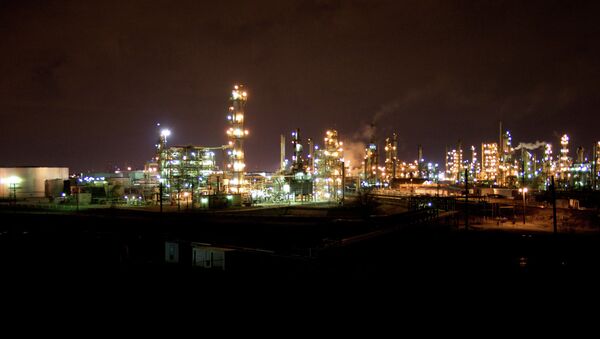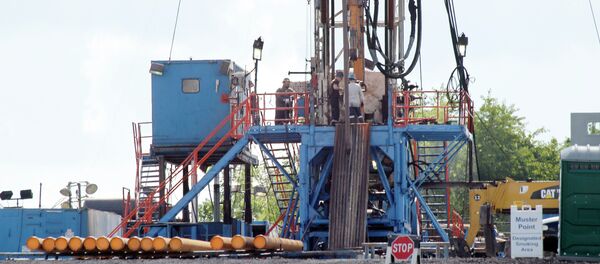What goes up, must come down, and this proverb might turn into reality for the US economy before the end of Q2 2015, as the ongoing decline in crude prices is leveraging pressure on the profitability of many shale oil producers, the recent Wall Street Journal publication argues. Now, with Brent crude prices sliding below $60/bbl, the US shale oil industry is on the verge of a rebalancing of sorts, with the least profitable assets changing hands or preparing to do so. However, even if one assumes the Morgan Stanley forecast of $43/bbl for the next year will prove true, the differentiated shale oil breakeven for the US energy companies would allow for most of them to stay afloat at least.
Some scrutiny is required to have a deeper look into the mater. First and foremost, the average breakeven for US shale oil producers is unknown and varies greatly from one company to another, depending on, besides volumes and costs of extraction, on such unstable variables as equity valuations, stock market fluctuations and the Federal Reserve’s monetary policy. This is a totally different situation than in most oil-producing nations, where large monopolies control crude extraction, production and exports, thus making the oil breakeven point easy to calculate. For instance, according to MEES, IMF and Citi calculations based on the governmental data, the 2015 oil breakeven is $103/bbl for Saudi Arabia, $107/bbl for Russia, $131/bbl for Iran, $151/bbl for Venezuela, $184/bbl for Libya, $60/bbl for Qatar, and $54/bbl for Kuwait.
Bloomberg New Energy Finance has estimated the average US shale oil breakeven at $80/bbl. Robert W. Baird Equity Research put the breakeven at $53-93/bbl, Morgan Stanley estimated it at $60-80/bbl, UBS Investment estimates say $43-111/bbl, Credit Suisse puts the breakeven at $24-84/bbl, as compiled by Reuters. Ed Morse of Citi said in November the US shale breakeven is at about $90/bbl, but the whole industry would be challenged in case the oil prices move to $60/bbl. Scotia Bank, in turn, said the US shale oil breakeven is at $60-61/bbl.
The WTI spot prices have been, on the average $93.21/bbl in September 2014, sliding down to $84.40/bl in October, to $75.79/bbl in November. Then the WTI experienced a dramatic slump down to $67.18/bbl in the 1st week of this December, to $61.14/bbl in the 2nd week and $55.89/bbl in the third week of December, according to the data by US Energy Information Administration (EIA), coinciding with an unprecedented rise in the US crude stockpiles. The aforementioned breakeven data suggest that a large part of the US shale production should have become unprofitable, followed by bankruptcies in energy companies, sell-offs in energy equities and an overall economic downturn.
For some reason, this is not happening.
The WSJ argues the oil price of $56/bbl, prolonged into 2015, would take the toll of 40,000 jobs by late 2015 in oil and gas (9% of the total workers in the industry), and an additional 5,000-6,000 jobs in mechanical engineering (6% of the total currently employed).
This might be fair enough, in case the current readjustment in the shale oil industry fails, which is hardly possible. Even if it does, shale oil production is concentrated in five US states, namely Texas, Nebraska, West Virginia, Pennsylvania and North Dakota. Except TX and PA, the other three states have seen far worse times in the past than a 9% contraction.
This pessimistic scenario is hardly viable though, but in case in comes true, the abundance of oil stockpiled in the US will have more of a positive impact on the US employment nationwide. The $812-billion US chemical industry is about to boom on the cheaper and readily available oil and gas. Chemical production is bigger than aerospace ($224 bln), automotive industry ($276 bln) and computer electronics ($28 bln), summed together, and constitutes 25% of the US economy, according to the data by American Chemistry Council. The decreased cost of both raw materials and energy, which are oil and natural gas to the US chemical industry, are a double benefit for the sphere, according to a PWC estimate.
The recent advances in the biotech and pharmaceutical shares on Wall Street are not a coincidence. Medicine is daughter to chemistry, and the latter’s prospects are big. Thus, the seemingly alarming tendencies in the US economy turn out to be a win-win situation.
In case crude prices grow, the shale boom in America’s raw materials production continues. In case oil plunges further, America’s chemical plants, oil refineries, fertilizer mills, drug makers, synthetic clothing and dye producers and many more businesses, constituting the quarter of the total economy, will skyrocket, creating even more jobs and money.





